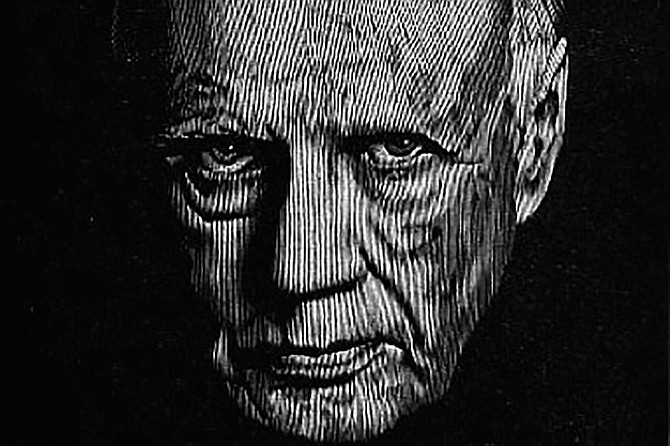 Facebook
Facebook
 X
X
 Instagram
Instagram
 TikTok
TikTok
 Youtube
Youtube

Whatever the wonders of data, Voytek remains a neuroscientist at heart. His eponymous lab studies neural oscillations and they role they play in cognition, aging, and disease. “For whatever reason,” he says, “there are certain parts of the brain that oscillate. It’s the first signal ever recorded from a human brain — in 1929. And almost 100 years later, we don’t really know why. Is it useful? Is it required? I think it’s fascinating that we’re still kind of fuzzy about it.” He does know this, however: “there are connections between just about every disorder — ADHD, anxiety, depression — and oscillation in some part of the brain.”
Hearing that reminded me of the More Qualitative-Quantitative Ontological Lapsometer, the “stethoscope of the spirit” from Walker Percy’s novel Love in the Ruins. Instead of oscillations, the Lapsometer read electrical activity, and sought to correct immaterial ills like rage and fear through a kind of targeted electric brain massage. A brilliant literary device, and what do you know, I had recently laid claim to a print of Barry Moser’s portrait of Percy. The missing links between ideas… But alas: last week, the gallery owner wrote to say, “I am very sorry to say that the print has not turned up. Barry searched and could not find one either. My guess is that it is misfiled somewhere.”


Whatever the wonders of data, Voytek remains a neuroscientist at heart. His eponymous lab studies neural oscillations and they role they play in cognition, aging, and disease. “For whatever reason,” he says, “there are certain parts of the brain that oscillate. It’s the first signal ever recorded from a human brain — in 1929. And almost 100 years later, we don’t really know why. Is it useful? Is it required? I think it’s fascinating that we’re still kind of fuzzy about it.” He does know this, however: “there are connections between just about every disorder — ADHD, anxiety, depression — and oscillation in some part of the brain.”
Hearing that reminded me of the More Qualitative-Quantitative Ontological Lapsometer, the “stethoscope of the spirit” from Walker Percy’s novel Love in the Ruins. Instead of oscillations, the Lapsometer read electrical activity, and sought to correct immaterial ills like rage and fear through a kind of targeted electric brain massage. A brilliant literary device, and what do you know, I had recently laid claim to a print of Barry Moser’s portrait of Percy. The missing links between ideas… But alas: last week, the gallery owner wrote to say, “I am very sorry to say that the print has not turned up. Barry searched and could not find one either. My guess is that it is misfiled somewhere.”
Comments